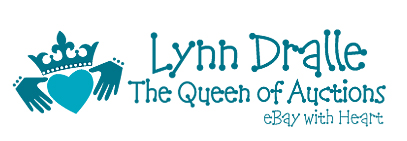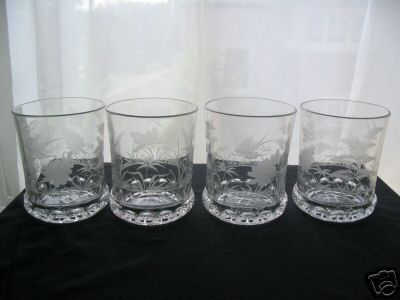Hi fellow eBayers!
I have some really exciting news and I may just need you to be in a TV commercial with me! Also, a great feature article from one of my expert friends.
![]()
- Lynn Recommends: 12 hours left for The Queens Court Charter Membership
- Special Announcement: An Infomercial starring you?
- Feature Article: EAPG article by Elaine Henderson
- The Queen’s Update: Our 23rd 100 Best Story from YOU
This ezine is published once a week.
August 2, 2007 Volume III, Issue 29
Dear friends,
Where do I start? What a week! I would like to take some time off–hopefully this August. But who knows at the rate things have been going!
I got some really great news this past week from the company Incredible Discoveries about an infomercial. Please read the special announcement section because I am very excited about this and we need some of YOU to film testimonials!! How would you like to be flipping channels in the middle of the night and see yourself?
My kids left last Thursday to fly to Bellingham with my mom for the rest of the summer and I miss them! It is pretty lonely without them here. I will leave next Monday to join them for a few weeks and hopefully get some R&R. When my mom was here helping, she wrote up a lot of those little girl dresses for me to list and I told her, ‘I can just picture myself listing all of these dresses sitting on the deck of your beach house!’
Here is a photo of my mom’s beach house.
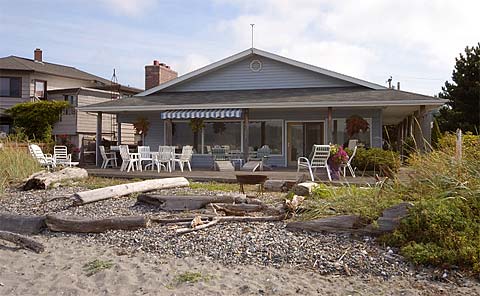
OK, I admit it. I finally broke down and moved a bunch of merchandise to my storage unit! The storage unit was just supposed to be for book inventory–not eBay inventory. Yikes–I never wanted to have so much eBay inventory that it wasn’t easily accessible here at the house. But I had to do it–those little girl dresses in my dining room were freaking me out! And I just bought a collection of 200 pigs. Oh well, I shouldn’t be complaining about having inventory! And as I am always telling you guys, stock up while you can.
I just realized that today, 8/2/7 is the 7th anniversary of my grandmother’s passing and the 5th anniversary of our closing the shop. Amazing how so much can happen in just seven short years. I wanted to take a moment to honor her with my thoughts and this photo–one of my favorites of her. This photo was taken at my mom’s 60th birthday party and shows my grandmother’s wonderful spirit and love of life. She had the most amazingly contagious laugh and I can still hear it.

Thank you to everyone who purchased Ka-Ching this week and made our book promotion super successful!!! Thank you.
Our feature article this week comes from my very good friend Elaine Henderson from www.patternglass.com. She has always been gracious and so helpful to me. She and her husband Bill are pictured in my new book The 3rd 100 Best Things I’ve Sold on eBay…Ka-Ching!
Check out this vase that she helped me identify.
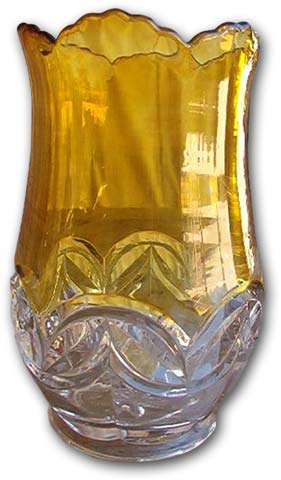
Elaine and Bill of PatternGlass.com

EAPG stands for Early American Pattern Glass and these pieces can sell for big bucks! Check out this auction on eBay for four tumblers in the Dakota pattern that sold for an incredible amount of money.
Click here to see how much they sold for.
This week we have another great story about the things you all have sold on eBay. This one comes from Denise and is about a find she made at her favorite yard sale.
And last but definitely not least, The Queen’s Court is filling up and I don’t want you to miss out on a Charter Membership that expires tonight at midnight. Our first teleseminar was on July 25th and it was a blast! My special co-host this month was Maureen (Mo) my former assistant. The price will be going up tonight, so please don’t miss out on a charter membership. Read more in the Lynn Recommends Section.
Here’s to Successful eBaying!
Lynn Dralle, ‘The Queen of Auctions,’ Creator of the best-selling eBay Boot Camp in a Box.
The Queen’s Court Charter Membership will end at 6 PM EDT this evening, August 3rd. Please sign up before then to get in at the low introductory price!
The Queen’s Court is open for business. In a nutshell, each month you will get:
- A new Q&A teleseminar–where I will be answering YOUR questions
- A downloadable transcript of the Q&A session
- The CD recording of the teleseminar sent to you in the mail
- A posting board where you get to ask me to ID your Antiques/Collectibles
- A Networking Discussion Board–for members only
- A 15% discount off of any regularly priced product on my web site (live events excluded) for as long as you are a member in good standing.
- Finally, A surprise Bonus each month–this month it has something to do with Ka-Ching!
Click here now for more info. Click here now to sign up.

I can’t wait to meet you online and on the phone!
Now this is exciting! I have been chosen by Incredible Discoveries located in Deerfield Beach, Florida to joint venture on an infomercial. Imagine, me and some of my students on TV in the middle of the night–or the middle of the day!

The infomercial is scheduled to air in January, so they have asked me to start putting together some testimonials. The infomercial will be 30 minutes long and they are looking for students, readers of my ezines, graduates of my ecourse, Boot Camps, etc., that can put a dollar amount or percent increase on their eBay business because of what they have learned from me.
If you are close to their studios in Florida–it will be an added Bonus–Cathi–I hope you read this!┬Ā She is one of my Live Boot Camp grads. Also, we may have to shoot in LA or another large metropolitan area depending upon how many of you we can gather in one central location. This is so fun! So, if you have a testimonial with some concrete numbers, please email it in so that we can consider you. Or send me a video tape/web cam of your testimonial–that would be even better for the production people to have for consideration!
‘EAPG – simply Early American Pattern Glass‘
by Elaine Henderson, PatternGlass.com
We have a guest columnist this week. I am glad to introduce Elaine Henderson of PatternGlass.com, a friend and expert who has consulted on my books. She will be sharing her expertise in Early American Pattern Glass with us this week and next.
-Lynn
A cursory look at the auction items offered in the section of ebay at Pottery & Glass > Glass > Glassware > Early American Pattern Glass, could leave a person slightly bewildered. You have to wonder why some choose that section which is designated specifically for 19th century American pressed glass to list their item, especially when their auction item is glass made in the mid 20th century or even pottery or china!
One explanation may be date related. The term “early” is subjective. “Early” to many, means “before I was born” or certainly before my parents were born. Another is that Early American Pattern Glass, or EAPG, is simply a widely misunderstood catch-all term that is interpreted as “glass I want to sell.”
Another point of confusion is that this glass with a very narrow definition is known by so many terms. The two most obvious are Early American Pattern Glass and EAPG, but it is also referred to in the literature and in current vernacular as ‘pressed glass’, ‘pattern glass’, ‘old glass’, ‘Civil War glass’, ‘Victorian glass’, and even Early American Pressed Glass. We are going to attempt to unravel the mystery here.
The definition of EAPG is, in its simplest form: glass dishes pressed into a mold, in America, between 1850 and 1910, mostly in sets, such that all the pieces of the set match in design.
“Wait!” you’re saying. I have a collection of Bird & Strawberry pattern that was made in 1915! Right. You’ve just identified one of the conundrums of EAPG. A few glass companies made patterns that were so popular that they continued making them after 1910 and some glass companies, notably Indiana Glass Co., Indiana Dunkirk & Kokomo Jenkins, introduced a few patterns that had that “Victorian” aura for a few years after 1910.
“Wait!” you’re saying. I have some glass that was pressed in America before 1850! Right. Another conundrum… there was glass pressed in America before 1850. But mostly those pieces were salt dips, curtain tiebacks, candlesticks, dresser knobs and a few other items…. not what is thought of as “kitchen dishes”….but they are sometimes cast into the net of EAPG anyway. No one ever said that the antiques world is rigid. Or easy.
For the record, a body of collectibles needs to have somewhere to begin and end and for simplicity for EAPG, most have chosen 1850 -1910, the Victorian era.
And so, EAPG does have a date definition, even if it is a little elastic.
One helpful way to look at EAPG is to divide the 60 (or so) years it was made into four Periods or Ages.
The Age of Lacy Glass 1825-1845
Lacy is a general term evolved by collectors to describe the earliest type of pressed glass produced in the US. “Lacy” refers to the look of these early patterns’ scrolls & geometric designs against a finely stippled background, which gives the glass the look of fine lace.
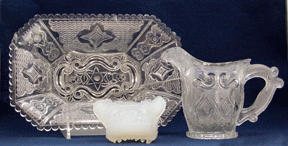
Shown are Lacy Glass pieces from L to R large dish, milk glass master salt, & Acanthus Leaf & Shield creamer w/ pressed handle.
This glass was early referred to as “sandwich glass” after the Boston & Sandwich Glass Co. of Sandwich, MA which produced a great deal of this ware. Today, it is realized that many other factories on the East Coast & in the Pittsburgh, PA and Wheeling, West VA areas also made lacy looking glass. The first pieces made were drawer pulls, cup plates, master salts, curtain tie backs and later there were perfume bottles, decanters & some dishes although they were not in sets yet. Lacy glass was rarely made in colors and most of that is now in museums. Lacy glass is always flint glass and if you own some, you have some American historical treasures.
You can learn more about Lacy Glass on our web site here.
Colonial Age 1845-1865
Here ends the Lacy age and begins the Flint Glass age. From the late 1840’s to the Civil War, American pressed glass contained a high lead content and is known today as “flint Glass” or “lead glass”. Flint glass is heavy and exceptionally clear with a familiar ringing quality when gently tapped. During this period we see the emergence of glass dishes in recognizable and named patterns.
Each pattern might consist of of simply goblets or other matching various-sized drinking vessels, whale oil lamps, celery vases, decanters, sugar bowls, spill holders, butter dishes & creamers, and even some bowls and pitchers were made in these early years.
The creamers & pitchers mostly had applied handles made by attaching a molten strap of glass onto a previously molded body. Applying this hot strap to the cooled body frequently resulted in the ‘stress fracture’ or ‘heat check’ at the attachment point so understandably common in these pieces. Later in this period, spooners and pomade or pickle jars were added to the forms made.
During the 1860’s, changes in the availability of elements, including lead, used in the formula for glass and necessitated in part by the Civil War, caused the dishes to take on different physical characteristics. They were lighter weight, less clear and exhibited no bell tones. We now call this type of glass ‘non-flint’ glass or ‘soda glass’. With improved glass pressing machinery, mass production began and matched tableware sets began to proliferate. A few glass companies, including Boston Sandwich, continued to make some of the higher-priced lead glass dishes up until the 1870’s.

Shown are flint pieces from L to R Diamond Thumbprint spooner, Bullseye covered sugar, Ashburton creamer w/ applied handle.
Learn more about Flint Glass here.
The idea of a matched glassware table service quickly caught on in America. Many patterns had numerous accessory pieces among which were cruets and syrup pitchers. During this time, tall pieces such as high standard compotes and cake stands were made in 2 parts and had “wafer” connections. A small dab of molten glass was put between the top and the base which, when cooled, stuck the 2 pieces together although sometimes not totally on the same plane making the finished product a little tilty or even twisty.
Post Civil War (Reconstruction) Age 1865-1870’s
Now pressed pattern glass began to be made in larger quantities. Color was introduced and the patterns changed from being mostly geometric & ribbed styles to folksy naturalistic designs that reflected current trends in home fashions. The Centennial of America was celebrated in 1876 and many more glass patterns were introduced. Lots of stars were stylishly employed and commemorative objects were made that exhibited the pride Americans had in our Country.
Some glass dishes during this Age were “gussied up” by frosting by sand blasting, grinding or chemical exposure; copper wheel or stone wheel engraving; some acid etching and other colorless decor. It is interesting that many confuse the engraving and the etching processes on EAPG. In a nutshell, if the decoration is cut into the surface of the glass (you are able to feel the cut with your thumbnail) it is probably engraved.
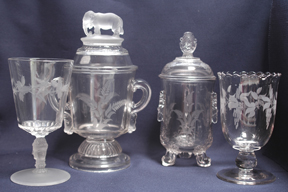
Shown are engraved pieces from L to R:
Three Face goblet, Jumbo covered sugar, Grasshopper covered marmalade and Crystal pattern spooner.
If it is smooth to the touch, it is probably etched.

Shown are etched pieces from L to R:
Swirl Swan open compote, Pavonia tumbler, Bead & Scroll cruet.
By far, most EAPG is decorated by engraving with only a handful of patterns, such as Ohio and Pavonia being etched. A few etched patterns show scenes or tell a story such as Deer & Dog or Flamingo Habitat. Another popular colorless decoration was frosting.

Shown are frosted pieces from L to R:
Classic pattern water pitcher, U S Coin sauce dish, Royal Oak covered sugar.
Read much more about this decoration on glass here.
The Golden Age of Pressed Glass 1880-1910
By the 1880’s pattern glass was produced in great volume in hundreds of patterns, and colored glass came into vogue. The 1880’s was the Hey Day of Pattern Glass – color became King. Astronomical quantities were sold in dime stores, through catalogs such as Montgomery Wards and some was given away as premiums in soap, oatmeal, jelly, etc. by companies such as the Lee Mfg. Co. of Chicago.
The “Gay ’90’s” began with a severe nationwide economic depression, necessitating the closing of many smaller glass companies many of whom turned over their most valuable tangible assets, their molds, to larger conglomerates. The largest such combines were the U S Glass Co. and the National Glass Co. This group strategy allowed the continued production of most patterns, although many were renamed and altered slightly in design when the molds changed hands.┬Ā As a marketing technique, the largest combine, U S Glass Co., began naming patterns after states of the Union, sometimes simply renaming old patterns & sometimes introducing new patterns named for a particular state.
Decorating pattern glass became even more popular during the 1890’s and we find cased, stained, flashed colored decor as well as the colorless embellishments that were also still being used.
Read much more about this form of decor here.
The ruby staining of souvenir glass was very popular during this time and emerald green colored glass was made for the first time in the ’90s.
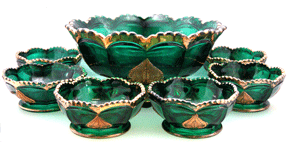
Shown is an emerald green master berry set
in Leaf Medallion pattern.
The most common colors of EAPG made during this time include a sapphire blue, amber, vaseline (canary), amethyst and apple green.

Please note that EAPG was never originally made in light purple or lilac color. EAPG seen today in those colors has been purposefully turned by placing it in direct contact with sunlight UV rays for an extended period – months – or with UV rays from a germicidal lamp for a shorter period – weeks. To read more about this serious problem that has taken thousands of pieces of originally clear EAPG off the antiques market, please go here.
The production of the States’ series continued into the first decade of the twentieth century, but by about 1910, the designs began to loose their Victorian flavor taking the look of the fancier cut glass. In fact sometimes these patterns are now referred to as “Cut Glass Look-alikes.” Demand for Victorian pressed glass declined by 1915, and glass fanciers were collecting EAPG by the 1930’s.
And then there is the riddle of what glass is actually included in this family friendly collectible field. We use the word “form” to designate different pieces of patterns – goblet, sugar bowl, mustard pot, etc.
We will hear more from Elaine next week on the different forms found in EAPG.
Happy eBaying,
Lynn
WANT TO SEE MORE ARTICLES LIKE THIS ONE?
See Lynn’s past ezines here.
WANT TO USE THIS ARTICLE IN YOUR EZINE OR ON YOUR WEBSITE? Yes, you may – just as long as you include all links as they are and append this complete blurb with it: The Queen of Auctions and eBay Power Seller, Lynn Dralle, publishes ‘eBay Tips & Tricks’ a weekly ezine with 10,000+ subscribers. If you’re ready to jump start your eBay business, make more money and have more free time, get your FRE E tips now at www.thequeenofauctions.com
I am happy to present our 23rd story for The 100 Best Things You’ve Bought or Sold on eBay! This one comes from Denise. Read about how the find she made at her favorite yard sale. Click below to read…
Click here to read the story…
Please patronize Denise’s auctions (goodneighbor2u) and her eBay store (Vintage Collectibles and More) and make her business this year even better. Thanks!
A big thanks to everyone who has already submitted a story! We are looking for more great stories of your eBay adventures. We know there are many great tales out there, so please submit your story along the lines of the stories from the 100 Best Books and a great side story with photos will help. If we use your story, you will receive a $35 merchandise credit on my web site and you will have your story featured–along with your user ID–in my ezine! It may also eventually end up in a published book!
By the way, when I mention my ezine readers’ user IDs with links to their auctions–it actually helps their sales! Amazing how that works. Click here for the guidelines for submitting your stories.
![]()
eBay Power Seller and third generation antiques dealer, Lynn Dralle, is the creator of Boot Camp in a Box, the home-study course where you can learn to implement the Dralle Method to maximize your eBay profits.
If you liked today’s issue, you’ll love this step-by-step course that is guaranteed to be the most complete and enjoyable guide to selling on eBay that MAKES YOU MONEY.
Read all about it here.
The Queen of Auctions also offers free articles, teleseminars, how-to books, tracking guides, DVDs, eBay Boot Camp training and other resources to help entrepreneurs make their eBay business a six-figure sales machine. Click here to learn more.
The Queen of Auctions/All Aboard Inc.
PO Box 14103
Palm Desert, CA 92255
760-340-6622
Lynn@TheQueenofAuctions.com
Happy eBaying!!
Lynn
Visit my eBay Store.
Visit my eBay auctions.
For more great eBay tips and stories, visit my web site at:
Lynn is an experienced eBay Power Seller, author and teacher. If you want to know the eBay tips, tricks and tools that Lynn uses for buying and selling at online auction click here.
Copyright ┬® 1998 – 2007 Lynn Dralle – All Rights Reserved
